The production of BRG requires top class manufacturing technology especially within the sphere of bending moulds/tools.
This first part of our technical article will review the various ballistic standards which designate the various types and categories of BRG products. The second part will discuss the production challenges associated with BRG.
BALLISTIC TEST STANDARDS
Whilst BRG is the correct terminology there are a number of various international ballistic test standards which form the actual “language” of the business. Most countries have their own test standards however; there are three standards which dominate BRG production and International sales, these are:
- BS EN 1063,
- NIJ
- STANAG
BS EN 1063 is a British/Euro standard, NIJ is the most prominent USA standard and STANAG is now the NATO standard. The first two standards have been around for quite a while whilst STANAG is relatively newer and primarily sets the standards for NATO military vehicles. Civilian vehicle armourers generally specify their BRG requirements against the BS EN 1063 and NIJ standards although STANAG is gaining popularity within this sphere of armouring.
THREAT LEVELS
All ballistic test standards incorporate “threat levels” which designate a specific calibre; an example of this would be BS EN 1063 level 6 which translates into a threat level of 7.62 x 51 NATO ball ammunition. The individual test standards also dictate their own testing procedures which will include the required test piece size, number of test pieces, test temperatures, shot test pattern, shot distance etc.
The most commonly requested threat levels are – by calibre:
- 7.62 x 51 NATO BALL
- 7.62 X 51 NATO ARMOUR PIERCING
- 7.62 X 54 RUSSIAN (API)
- 7.62 X 39 RUSSIAN (BALL AND API)
- 5.56 X 45 NATO (SS-109)
- 44 MAGNUM
- 12 GAGE SHOT GUN (BRENNEKE SLUG)
It should be noted, that the international specifications are not standardised and therefore you have the situation where NIJ level 3 = 7.62 x 51 NATO BALL this equates to level 6 for BS EN 1063. It is imperative that the manufacturers and the clients “talk the same language”.
BRG PRODUCT TYPES
BRG has two primary types: “no spall” and “low spall” however, it should be noted that the low spall types of BRG have generally been surpassed by the no spall products. Spall being glass particles that are ejected off the back face of BRG during ballistic attack; spall can obviously be dangerous to eyes etc.
Low spall products are generally manufactured from “all glass” laminates and represent the low end of the market. Most products are now “no spall” (sometimes called asymmetrical formulations) and are a combination laminate, which consists of glass and polycarbonate, the polycarbonate is generally on the back face and eliminates the glass spall effect.
However, the primary function of the polycarbonate is to act as a shock absorber, the shock absorbing characteristics of polycarbonate is so effective it allows the laminator to manufacture thinner and therefore lighter BRG sections per ballistic threat level. This of course provides a massive weight saving advantage for the vehicle armourers.
In general terms the all glass, low spall types of BRG are approximately 75% thicker than their glass/poly counterparts which represents a massive weight differential. Low spall BRG is generally confined to architectural applications/static applications where weight is of less concern.
It should be noted that laminators usually apply a polycarbonate which has one face “hard coated”, this hardened face is on the rear and exposed face of the BRG – non attack face and forms a reasonable barrier against abrasions and scratches.
There is a third type of BRG which is not very common place and is termed as a “symmetrical formulation” which is: glass/polycarb/glass, this is sometimes used for architectural applications and is a lighter type of low spall glass.
The requirement to protect exposed polycarbonate from abrasions and scratches probably led to the design and manufacture of the “symmetrical formulations”, a glass surface can take far more abuse than a polycarbonate face. BRG products with “asymmetrical formulation” are typically applied in banks and older military vehicles.
PRODUCTION CONCERNS
There are probably two main areas of concern and complexity facing any new or existing manufacturer of BRG firstly, to develop light weight laminations that will meet the required ballistic threat levels and secondly the ability to consistently manufacture optically correct curved sections of automotive BRG.
The production of curved automotive BRG requires perfectly tailored tooling and manufacturing processes that will ensure both good quality and ultimately, the good reputation of the manufacturer. Any doubt or lack of knowledge in these areas can create very long and very expensive development programmes which leads to a loss of confidence for both the manufacturer and ultimately their clients.
Part 2
The second article in our technical series about bullet resistant glass (BRG) discusses the various complications encountered when entering this sphere of the safety glass industry. The production processes are in some ways very similar to that of manufacturing normal automotive windscreens equally, they share some of the same processing problems. This article will focus on the key aspects of BRG manufacturing, or more specifically the key problematic areas.
INITIAL STATEMENT
Laminated automotive safety glass is usually in the order of 6mm in thickness and has a degree of flexibility which assists in its ability to conform to a final shape tolerance specification, lift from fixture etc. However, a fully laminated BRG windscreen has “zero” flexibility and therefore has to be absolutely correct. At this point it should be pointed out that incorrectly manufactured BRG “is very expensive scrap”. Attention to detail cannot be over stated and is the primary difference between a good manufacturer and a bad manufacturer.
PRE-PROCESSING
It is critical to establish the correct glass shape data which may be via a drawing or sample from which the “flattened shapes” can be established; this information is usually digitised and used for both cutting and edge working.
A BRG windscreen can be designed to fit within the existing vehicle body opening, therefore it is essential to establish all the correct sizes at the beginning of the exercise. Arrissed edge working is simply not good enough. Therefore all glass edges should be either flat ground with appropriate chamfering or the application of a pencil edge finish. All glass sections that make up the laminate should be fully inspected for size and finish prior to being further processed.
All further pre-processing operations are in many respects similar to those used for the production of standard auto glass.
Picture 1 passed BRG application after shot test
GLASS BENDING
This represents the most difficult and technically challenging aspect of the manufacturing processes related to curved BRG, and is undoubtedly, the most important part of the process. The object of the process is to bend glass to a final shape that is of the correct size, shape, cross curvature and is optically acceptable. Heating and bending thick glass packs to a required shape and then annealing and cooling the pack without breakages and deformations is an essential part of the craft and it requires know-how, as well as quality mould tooling.
Picture 2 bend BRG windshield in visual inspection
A well trained and experienced furnace operator is undoubtedly a great asset to your company, but they need good tooling to define the correct and final glass shape. It’s true to say that the tooling is very special and that the final Picture 2 bend BRG windshield in visual inspection product is a total reflection of the tools shape, quality, and the actual applied bending processes. The engineering of great bending tooling is obviously not going to be discussed at length within this article however; we can supply this expertise as part of our technical package.
LAMINATION AND AUTOCLAVING
After the completion of the bending process, the glasses are separated and properly cleaned in order to remove all traces of the interleaving powders. At this point the glasses are thoroughly inspected for size, shape, optical quality and any other processing defects – if all is acceptable then the glasses are washed in a suitable liquid and passed on to the lamination room.
The glass and all other requirements/components are assembled in the correct order and relative positions, trimming etc. is all based on tried and proven lamination techniques. Vacuum bagging systems should be of the very best quality and again applied with tried and proven techniques. When the vacuum has been fully established a suitable electronic leak detector should be used to check for any leaks in the bag or connections.
After a suitable period of vacuum de-airing the assemblies can be moved to the autoclave. Autoclave processing programmes are fairly well documented and advised by the lamination film manufacturers however; individual laminators usually establish their own set of parameters that suit their equipment and product requirements.
FINAL INSPECTION
After the assemblies have been carefully removed from the vacuum bags they should be visually inspected for bubbles, cracks or any other surface or internal damage/defects as per normal inspection routines. The assembly should then be subjected to optical distortion test procedures and all other required windscreen test procedures as per normal windscreens.
Picture 3 BRG windshield zebra board inspection for optical quality
As a final note, the light transmission of BRG can be significantly reduced by the overall thickness of the laminated section, I therefore recommend that this subject be addressed and a minimum light transmission value agreed upon with the client. This value can be adjusted with the use of different glass types etc.
CONCLUSION
Each of the individual manufacturing processes contain significant degrees of difficulty and any failures within these processes will contribute towards sub standard products which, can be extremely detrimental to the manufacturers reputation as a competent supplier of BRG products. But most importantly, the most serious result of poorly manufactured BRG products is the risk of exposing the end user to an unacceptable degree of "life threatening component failure".
Safety Glass Experts can assist with any BRG product development program, legislative test standard approvals, production start ups in either new or existing plants and any other client requirements including training programs. Safety Glass Experts can significantly reduce BRG project time scales which, enables our clients to rapidly meet their production and marketing ambitions.
PICTURE SOURCE: Besel Glass Co - Armour Protected Glass
All graphics, photographs, and text appearing in this article belong to Safety Glass Experts International Oy Ltd. Redistribution or commercial use is prohibited without express written permission.

















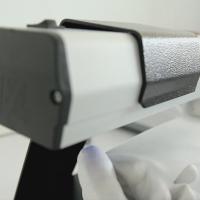
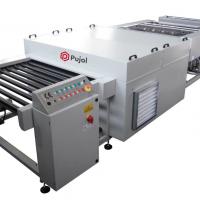
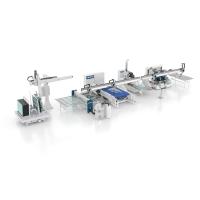
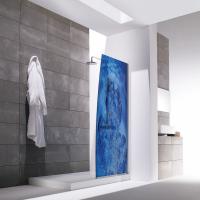
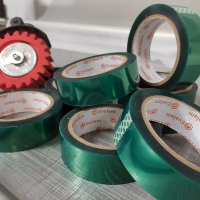
Comments
As a starter i tried to laminate assymetrical structures of Glass and polycarbonate.
Lets assume a 4mm glass with a 3mm PC.
I used TPU as the interlayer.
And used another 4mm glass on top of the PC (with no interlayer between) to protect the PC.
All this was placed in a vacuum bag and placed in an autoclave with 11bar pressure. (The vacuum was on through the whole cycle)
Heated the glass with a ramp of 1C/min to 117C and held it for about 30min and cooled it down with a rate of 0.5C/min.
Optically the glass was fine but the structure was bowed in a concave shape (if you place the glass/pc on a table with the glass touching the table the edges of the glass/pc are like U)
The whole cycle took about 5 hours.
Any guide and instruction on how i can achieve a perfect panel with no bow ?!!